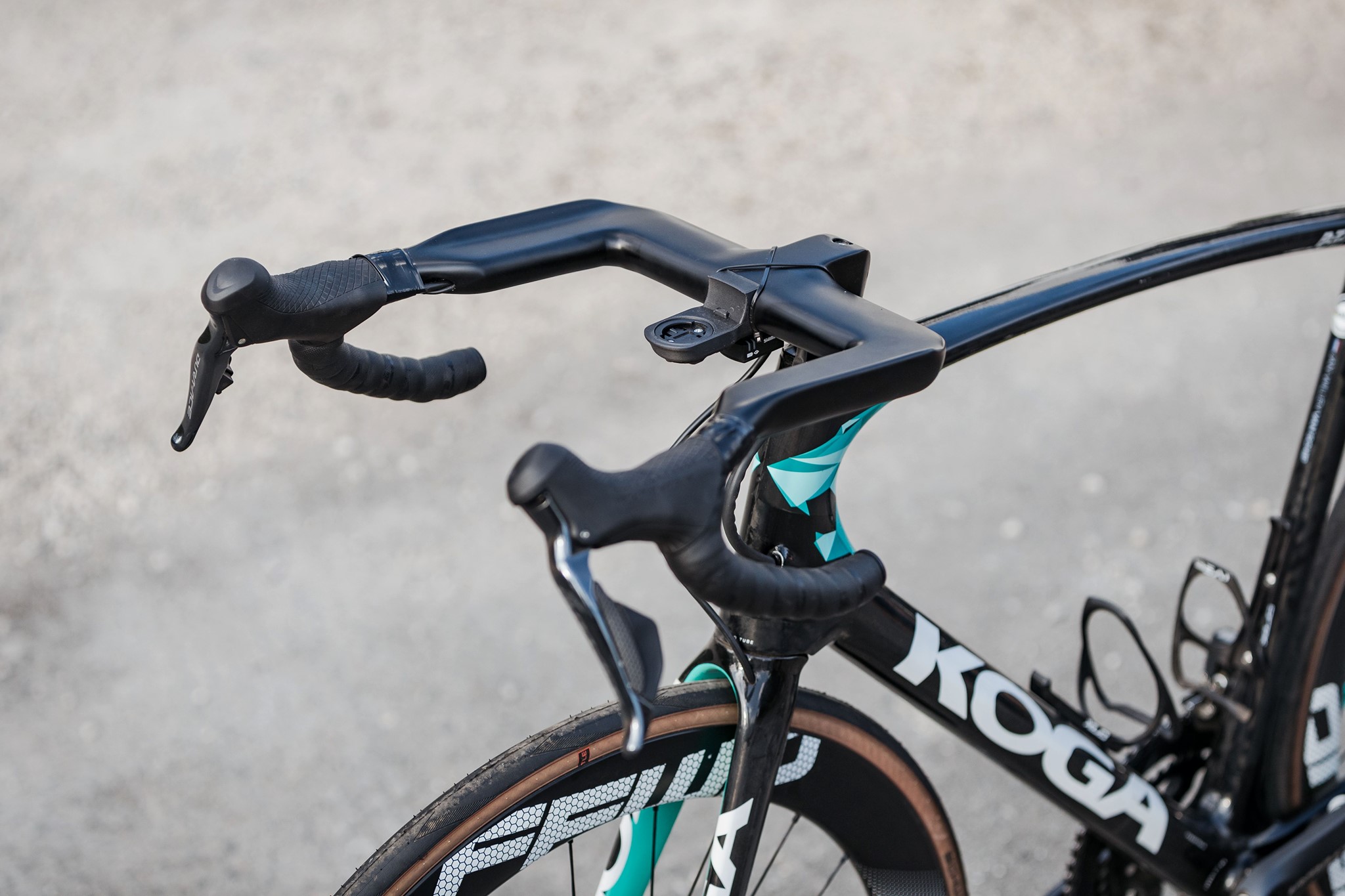UCI hit back after criticism of Van Schip’s aero handlebar disqualification
'Using the forearms as a point of support on the handlebar is prohibited except in time trials' says governing body

The UCI has hit back at criticism of the disqualification of Dutch rider Jan-Willem Van Schip at the Baloise Belgium Tour, insisting his innovative handlebar set-up violated UCI bike design rules because “using the forearms as a point of support on the handlebar is prohibited except in time trials.”
It seems the extreme bar shape is allowed under the UCI rules but resting forearms on the long flat section is not.
The Beat Cycling rider was in the breakaway on Friday's third stage, winning the most combative rider prize, and attracting attention for his curious handlebar setup from fellow riders, fans and then the UCI.
The Speeco Aero Breakaway handlebars, which were designed with Van Schip, feature a 70mm stem with a long and flat moulded bars that extends forwards, offering possible forearm support.
Beat Cycling claimed the bars were cleared for use prior to the stage start by UCI race commissaires in Belgium but the UCI's Equipment Commission later decided to overrule that decision having seen television footage of Van Schip using his forearms as a point of support during the stage.
26-year-old Van Schip, a track rider who hit the headlines in 2018 after using tiny 32cm wide handlebars on the road, made the break of the day on stage 3 to Scherpenheuvel-Zichem, eventually finishing in 35th place behind stage winner Caleb Ewan (Lotto Soudal). Stage 3 was the first time he had used the bars in competition.
Beat Cycling issued a statement claiming they had never been told the handlebars were banned. However, the UCI pointed out in their statement that the handlebar manufacturer Speeco was informed that the design contradicted the UCI regulations, and the UCI Equipment Commission had prohibited the use of the handlebar until further assessments had been conducted.
Get The Leadout Newsletter
The latest race content, interviews, features, reviews and expert buying guides, direct to your inbox!
The international governing body also said that the Beat Cycling team had never contacted them before using the handlebar during stage 3 of the Belgian race despite the UCI giving all road teams a presentation of the UCI’s safety measures, including article 2.2.025, with visual examples of forbidden positions.
Riders using forearms to support themselves on the handlebars was outlawed back in April along with the much-discussed littering/bidon throwing ban and the 'super-tuck' descending position.
Beat Cycling had hoped to use the bars but a number of other riders had expressed concerns about their safety in a peloton. On Sunday, Baloise Belgium Tour leader Remco Evenepoel (Deceuninck-QuickStep) gave his opinion.
“If you ride alone, such a steering set-up is good but in a peloton it is a different story,” he argued.
“That bar is just completely different. When you see those armrests coming next to you, you are shocked.”
“A handlebar like this is not made for riding in a large group. Ordinary handlebars are still the essence of cycling.”

Stephen is one of the most experienced member of the Cyclingnews team, having reported on professional cycling since 1994. He has been Head of News at Cyclingnews since 2022, before which he held the position of European editor since 2012 and previously worked for Reuters, Shift Active Media, and CyclingWeekly, among other publications.